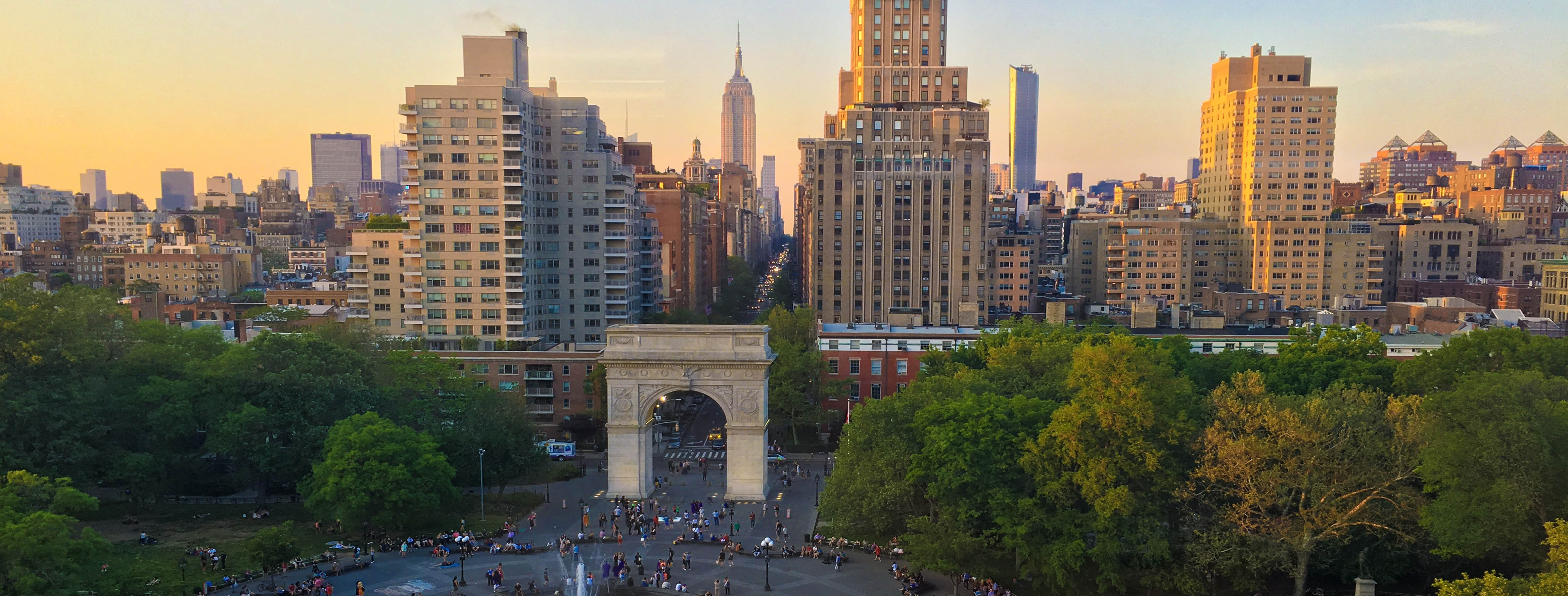Not only has much of Greenwich Village been declared a Historic District, but numerous sites within the neighborhood have been named city, state, or national landmarks as well. Below is a walking tour that takes in some of the most significant of these buildings.
Grace Church
802 Broadway (at East 10 Street)
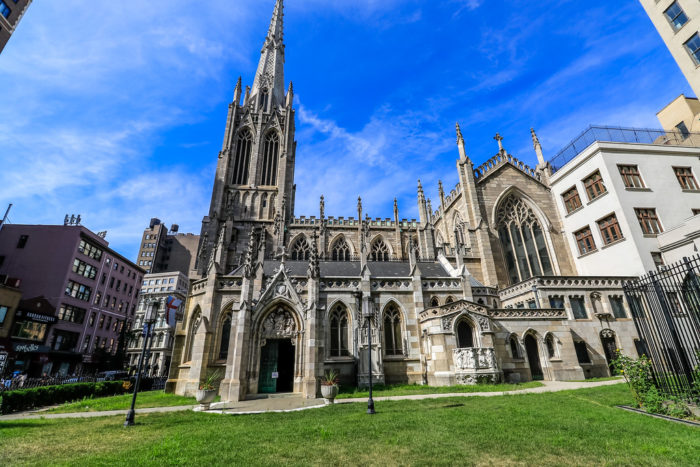
Image: Emilio Guerra / Flickr
Soon after it was consecrated in 1846, Grace Church was considered one of the city’s most fashionable houses of worship. One look at the Episcopal church and it is easy to see why. (Though in addition to being beautiful, the church was popular with the bon-ton because of its relatively high “pew rents,” for which parishioners were charged as much as three dollars a week.) Architect James Renwick Jr. designed this ode to French Gothic style when he was only 25 years old, a decade before he was commissioned to design St. Patrick’s Cathedral uptown. Now a National Historic Landmark and a New York City Landmark as well as being on the National Register of Historic Places, the church was built of marble quarried in the Westchester town of Ossining and cut by inmates at the town’s notorious Sing Sing prison.
Robbins & Appleton Building
1-5 Bond Street (between Lafayette Street and Broadway)
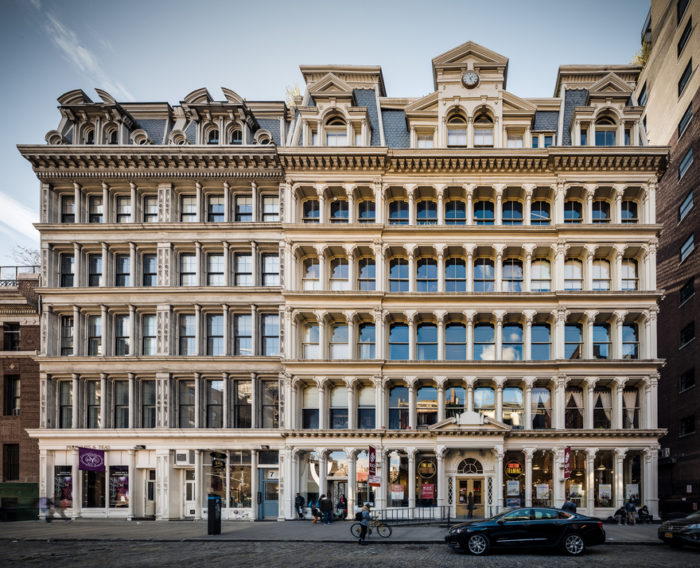
Image: fabricated.io
The Soho Cast Iron Historic District includes more than 200 cast-iron buildings, but Greenwich Village has its share of such structures as well, the most magnificent of which is arguably the Robbins & Appleton Building. Completed in 1880, the building that stands today replaced the original cast-iron structure, which was destroyed by a fire in 1877. Its mansard roof and ornate facade, with window bays, columns, arches, and cornices, belie the six-story building’s original industrial function: It was a factory that manufactured watch cases, with a store on the ground floor. Today the building, a city landmark that is also on the National Register of Historic Places, is a 20-unit condo building.
Judson Hall and Judson Memorial Church
52-54 Washington Square South (between Thompson and Sullivan Streets)
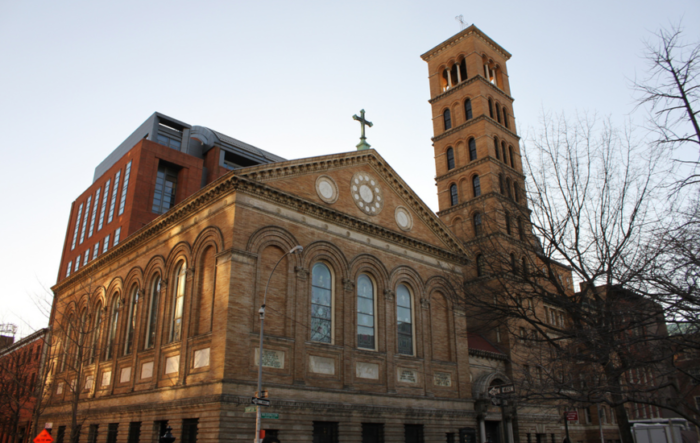
Image: ThinkOlio.org
When Baptist clergyman Edward Judson chose this spot for a new church in 1888, he envisioned it as a house of worship where wealthy parishioners who lived to the north (such as benefactor John D. Rockefeller) would worship with the poorer immigrants and African Americans living to the south and the east. Renowned architect Stanford White designed the church, sited next to the already-existing hall, in Italianate style. Artist John La Farge designed the spectacular stained-glass windows; Augustus Saint-Gaudens, whose other works include the sculpture of William Tecumseh Sherman in Grand Army Plaza, designed the chancel frieze, which was executed by another acclaimed sculptor, Herbert Adams. White’s firm, McKim, Mead & White, designed the accompanying Moorish campanile several years after the church was completed. The entire complex is now on the National Register of Historic Places as well as listed as a New York City Landmark. Incidentally, Judson did not name the church after himself but for his father, Adoniram Judson Jr., the first American missionary to venture to Asia.
Brown Building
23-29 Washington Place (between Greene Street and Washington Square East)
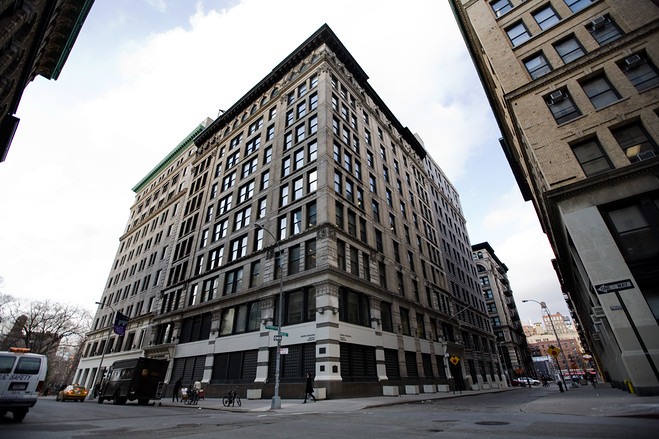
Image: Philip Montgomery for the Wall Street Journal
This building was named both a National Historic and a New York City Landmark as well as added to the National Register of Historic Places not for its relatively unremarkable appearance but for the tragedy that occurred here. On March 25, 1911, it was the site of the Triangle Shirtwaist Factory fire that killed 146 sweatshop workers, almost exclusively young women immigrants. Outcry over the conditions that made it impossible for those workers to escape—overcrowding, unsafe staircases, doors locked from the outside—led to legislation that improved both building safety requirements and factory conditions. Named the Asch Building at the time of the fire, it was later bought by philanthropist Frederick Brown and donated to New York University, which renamed it in his honor and still owns the 10-story building.
Church of the Ascension
Fifth Avenue and West Tenth Street
This Gothic Revival Episcopal church is one of two in Manhattan named Church of the Ascension (the other is a Roman Catholic house of worship on the Upper West Side). The architect, Richard Upjohn, was largely credited with bringing Gothic style to the United States. Prior to designing this church in 1840, he had designed Wall Street’s Trinity Church. Stanford White, not content with designing the Judson Memorial Church a few blocks away, remodeled the interior of the Church of the Ascension from 1885 to 1888, once again calling on John LaFarge to create stained-glass windows. LaFarge also painted a 35-foot-high mural, “The Ascension of Our Lord,” for the chancel. Now a National Historic Landmark and on the National Register of Historic Places, the church was the site of President John Tyler’s wedding in 1844. Just as significant, it was the first church in the city to keep its doors open around the clock to serve as a sanctuary for the homeless, a practice it began just days after the November 1929 stock market crash and continued for several decades.
Salmagundi Club
47 Fifth Avenue (between 11th and 12th Streets)
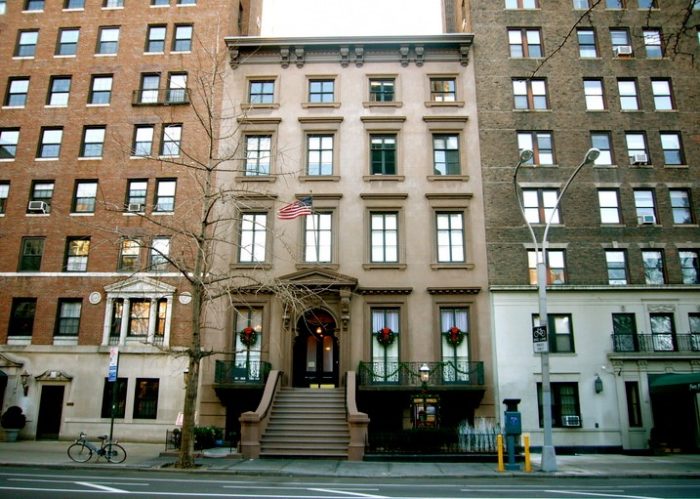
Image: untappedcities.com
Built in 1853, this Italianate brownstone was a private residence before the Salmagundi Club for artists acquired it in 1917. Founded in 1871 as the New York Sketch Class, the organization admitted only males until 1973, just two years before the building was named a city landmark and added to the National Register of Historic Places. William Merritt Chase, Frederick Stuart Church, Howard Pyle, and Norman Rockwell were among the club’s members, and those granted honorary membership included Winston Churchill and Al Hirschfield. You need not be a member to gain admission to the building, whose ornate moldings and fireplaces reference the Gilded Age; it is also a gallery with exhibitions throughout the year and a collection of more than 1,500 works.
Jefferson Market Library
425 Sixth Avenue (at West Tenth Street)
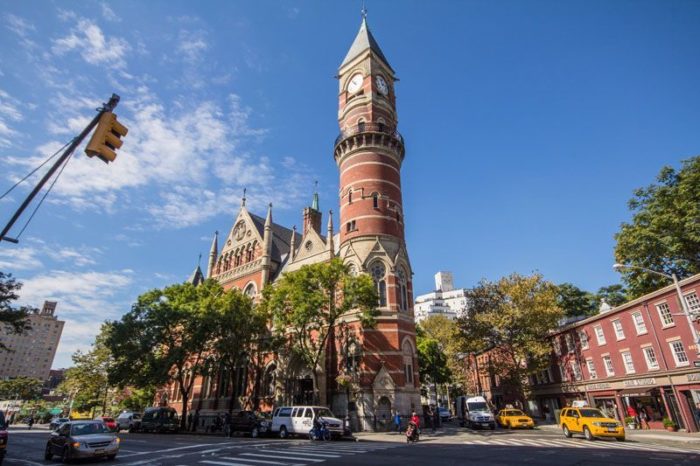
Image: New York Public Library
Within years of its completion in 1877, the Jefferson Market Courthouse—now the Jefferson Market Library—was named one of the 10 most beautiful structures in the country. Some would argue that the lavish Victorian Gothic building, with its stained-glass windows, 100-foot-high clock tower with bell, and myriad gables and spires, is still among the the country’s most striking. A courthouse until 1945, it saw “The Red Badge of Courage” author Stephen Crane testify on behalf of a woman accused of prostitution in 1896, the arraignment of Harry K. Thaw for the murder of Stanford White in 1906, and the arrest of Mae West on obscenity charges related to her play “Sex” in 1927. Since 1967 it has been a branch of the New York Public Library. The former holding area in the basement is now the Reference Room, while the one-time police court on the first floor is now the Children’s Room. The building as a whole is a National Historic Landmark and on the National Register of Historic Places.
Stonewall Inn
53 Christopher Street (between Waverly Place and Seventh Avenue South)
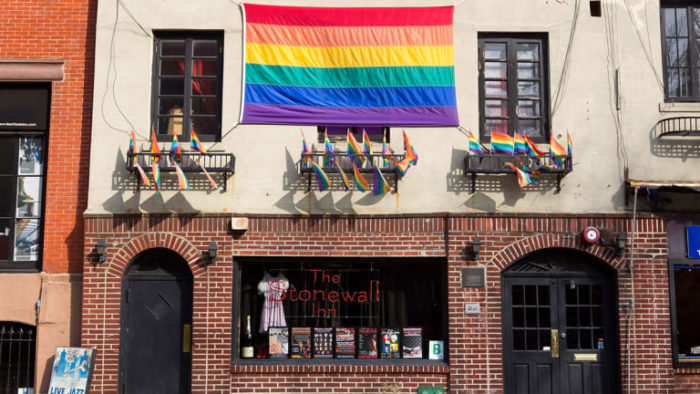
Image: Biography.com
Like the Brown Building, the Stonewall Inn is a National Historic Landmark and a New York City Landmark and on the National Register of Historic Places not for its architecture but for its cultural significance. This one-time stable and speakeasy turned gay bar was the site of the Stonewall Riots of June 1969, spurred by a vice squad raid; at the time it was the only nightspot in the city where same-sex dancing was allowed. The riots galvanized the LGBTQ community throughout the city, and ultimately throughout the country and even worldwide, to fight for their civil rights. A parade by community members marking the one-year anniversary of the riots ultimately grew into New York’s annual Gay Pride Parade.
A Landmark Tour of Greenwich Village – Warburg Realty


